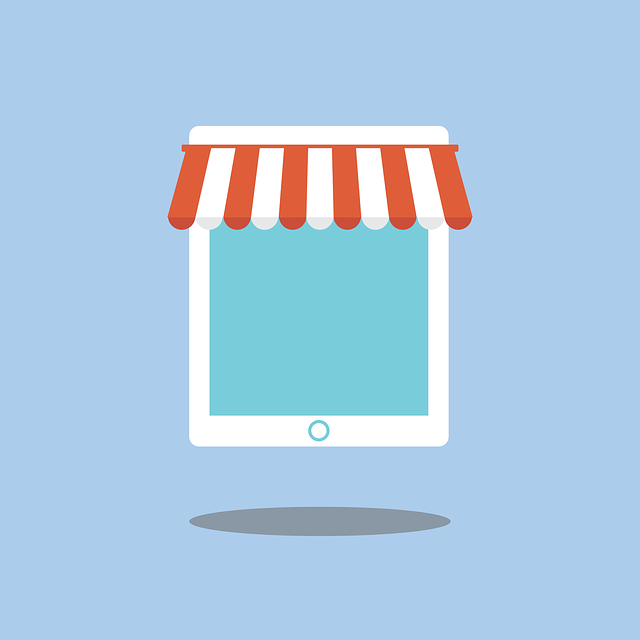
Creating an online store may seem daunting, yet with the appropriate tools and guidance, it can turn into a worthwhile and lucrative endeavor. It can aid in expanding your business and reaching a broader customer base, regardless of whether you have prior experience as an entrepreneur or are just getting started.
This article will outline the sequential process of starting an online store, including selecting an ecommerce platform, creating a website design, and launching your initial product. By following this in-depth guide, you will be on your path to establishing a prosperous online store.
How to start an online store
1. Choose an ecommerce platform
An ecommerce platform provides the opportunity to create and initiate an online store, achieve sales, and carry out order fulfillment. Many individuals mistakenly perceive an ecommerce platform as similar to a website builder, assuming that it solely involves listing new products and accepting online payments. However, an ecommerce platform has a broader range of capabilities beyond these basic functions.
When devising plans for creating a website for online sales, it is important to view your ecommerce platform as the command center for your entire business. This platform will oversee various aspects such as inventory management and marketing strategies, equipping you with all the necessary tools for online selling and customer support.
When considering an ecommerce platform, it is important to note the following key features:
- Usability. Your ecommerce software should be easy to use, especially if you are DIYing it in the beginning. Look for a tool that is intuitive and uses a drag and drop online store builder to easily create your online store. Schedule a demo or free trial if you want to find out for yourself.
- Accessible customer support. Look for a platform that offers support the entire way. For example, with Shopify, you can get help launching your site or migrating it from another software, as well as ongoing support. Support teams are available 24/7 through live chat, email, or even phone, anytime you need, in 19 different languages.
- Friction-free checkout. Streamlined checkout is critical to making sales. Find an ecommerce platform that makes it easy for shoppers to buy your products. If you use Shopify, Shop Pay streamlines online checkout, increasing checkout speed by four times. You can also use Shopify’s plug-ins, with more than 100 payment gateway to accommodate various payment methods and currencies.
- Web hosting. A web host stores information and content on your ecommerce website in a server database. You need web hosting to let people access your online store. Some ecommerce software offers web hosting built-in, while others require you to use a third-party solution.
When making a decision about ecommerce software, it is important to take into account both your present and future requirements. While certain platforms may be suitable for current needs, opting for a robust platform like Shopify allows for a fast start and ensures support for future business expansion.
2. Chose a domain name
In order to conduct online sales, it is essential to have a website address. Selecting the right address is crucial as it directly represents your company. It is advisable to opt for a name that is concise, simple to spell, and relevant to your business for optimal results.
“It’s best that you come up with a unique yet legit sounding domain name to make sure you don’t look suspicious once your online store becomes visible online,” says Lianne Sanders, founder of Total Shape, which sells healthcare supplements. “As much as possible, make it catchy and easy to comprehend for the purpose of building familiarity towards clients and customers.”
3. Decide on a target audience
When establishing an ecommerce business, it is crucial to identify your target audience, which refers to the individuals your marketing endeavors are directed towards. This understanding plays a vital role in facilitating the acquisition of new customers and drawing in potential buyers to your website. Consequently, this leads to increased conversion rates and a higher volume of sales.
As a new ecommerce entrepreneur, you need to consider three main categories when determining your target audience, which can vary in size and characteristics based on the products you intend to sell.
- Demographics. Includes characteristics such as age, gender, occupation, education, and income.
- Location. Groups that divide the market based on geographic location, so you can serve a specific area better.
- Interests. Built around psychographics and includes attitudes, personality, opinions, and the lifestyle of your audience.
Selecting a target audience becomes simpler if you already have a product. Simply consider the following questions: Who are the purchasers of my product? What are their characteristics? What is their age? Consolidate this information into a buyer persona and incorporate it into your business plan. This will be useful for developing your website content and marketing strategies.
If you do not currently have a product, consider the demographic of people you are most familiar with. For instance, if you are passionate about pets and have a deep understanding of pet owners in their 40s and 50s, it is likely that you possess insight into their preferences, dislikes, as well as their needs and concerns. This group of individuals could potentially be your target market.
4. Choose your products
Finding profitable products to sell is one of the top challenges entrepreneurs encounter. Generating product ideas can be a bit challenging, but having a target audience in mind gives an advantage. Luckily, there are numerous opportunities available to discover products for sale, regardless of whether you are involved in manufacturing, reselling, or dropshipping.
There are various ways to find profitable products for sale.
- Appeal to enthusiastic hobbyists
- Go with your personal passion
- Capitalize on trends early
- Look at what’s trending in online marketplaces
5. Find your unique selling proposition
You likely have a concept of what you wish to sell. The subsequent inquiry to ponder is how your offerings or services will distinguish themselves from the existing options.
“You look at the competition and how they do things,” says Jeremy Harrison, founder of Hustle Life, a website that helps people find a side hustle, such as launching an online store. “You find a way how you can do it better. This is part of your due diligence and must always be done before starting anything.”
6. Optimize your site
You can’t just launch a website and expect people to find you. It needs to be optimized to attract traffic through search engines. Using keywords in your product descriptions is one tactic, but it should be just the start.
“Our strategy was to start a blog targeting SEO keywords that offered useful information and had the potential to rank high in search engine results,” says Gilad Rom, founder of Huan, a company that sells tracking tags for pets. “This would draw traffic to our site and drive purchases of our product.”
After conducting keyword research, Rom established a weekly schedule for posting blogs. He reports that within four months, the blog posts began to generate traffic to the online store, resulting in increased product sales.
7. Set up shipping
When running an ecommerce business, shipping is often regarded as one of the most intricate factors to consider. With various factors such as product weights, packaging expenses, shipping destinations, carrier rates, and potential profit per order, there are numerous variables to manage simultaneously.
Fortunately, it is possible to simplify it to a handful of primary methods that can be combined based on the specific requirements of your company, allowing you to discover an effective shipping plan that suits your needs.
- Offer free shipping. Free shipping can be an effective incentive for customers to shop with you, whether it’s applied to certain products, order amounts (e.g., if they spend over $50), or regions of the world. Keep in mind that you will need to factor this into the retail price of your products if you plan on absorbing the cost of shipping on behalf of your customers.
- Charge real-time carrier rates. Shopify integrates in real time with various carriers like USPS and Canada Post to generate shipping options and live pricing. This allows your customers to choose the exact service and price they want. You can take advantage of discounted rates through Shopify Shipping.
- Charge a flat rate. Flat-rate shipping works best when your products have similar sizes and weights, making actual shipping expenses easier to predict.
- Offer local pickup/delivery. You can also give local customers the option to pick up their online order at one of your locations, setting specific notification settings, pickup instructions, and other details for each location.
Our Beginner’s Guide to Ecommerce Shipping and Fulfillment provides further guidance on creating a shipping strategy. Keep in mind that this, like the rest of our progress, can be reviewed and modified as necessary.
8. Connect a payment gateway
We are almost finished! The next step involves making a decision about the payment methods for your store and how you, as the store owner, will receive payment. To set up your payment provider, go to Settings > Payments. With Shopify Payments, it is simple to begin accepting various forms of payment.
If you run your business in any of the eligible countries and are not classified as a prohibited business, you have the convenience of easily enabling Shopify Payments with a single click and avoiding any additional transaction fees. Additionally, you have the flexibility to select from a wide range of over 100 third-party payment providers or provide your customers with alternate payment options like PayPal.
9. Spread the word
Stephen Light, co-owner of Nolah Mattress, a bed-in-a-box company, advises utilizing cost-effective social media marketing while starting an online store, as placing ads can require financial resources that may be unavailable.
“Social media marketing is a necessary investment for businesses who want to establish an online presence, especially those with online stores,” he says. “The ROI of social media marketing is higher than pay-per-click because gaining followers is a long-term investment.”
According to Light, when followers start following your business page, you no longer have to spend money on sending them content. As soon as you post, they can see it instantly and without any cost. Thus, the initial investment can have lasting benefits.
Launching an online retail business can be thrilling. By implementing the appropriate strategy ahead of your website’s launch, you can create a foundation for achieving success in e-commerce.






